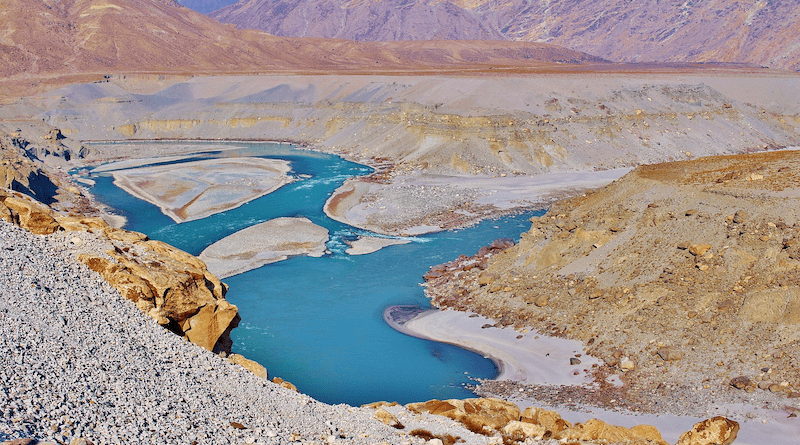Building Climate Resilience In Pakistan – OpEd
Pakistan has finally developed a National Adaptation Plan (NAP) after years of delay. Ideally, it should have been created following the climate policy in 2013, but funding from UNEP was awaited, leading to further delays.
While some may see it as a case of ‘better late than never,’ the real need lies in local-level adaptation plans. District and Tehsil levels are where adaptation truly matters, given the country’s vulnerability to floods, heatwaves, and droughts. National programs can offer general guidance, but Pakistan will struggle to respond effectively to the climate crisis with a concerted effort to focus on local needs and planning.
Pakistan has emerged as a significant hotspot for climate change, ranking among the top-ten countries most vulnerable to its devastating effects. The nation faces a plethora of challenges due to rising temperatures, water scarcity, rising sea levels, and extreme weather events. The 2022 floods were particularly catastrophic, displacing a staggering 8 million people. Adding to the peril, the projected recession of glaciers poses a haunting threat of glacial lake outburst floods. Despite contributing minimally to global warming, Pakistan bears substantial costs due to climate change, exacerbating its already challenging economic situation.
To combat these pressing issues, Pakistan must urgently prioritize adaptation and build resilience to climate change impacts. The Pakistan National Adaptation Plan (NAP) provides a comprehensive framework to implement adaptation strategies and promote inclusivity across various sectors. The NAP identifies seven key areas of focus: the agriculture-water nexus, natural capital preservation, urban resilience, human capital development, disaster risk management, and gender, youth, and social inclusion.
The NAP was developed through a consultative approach, involving extensive engagement with diverse stakeholders, and ensuring ownership and buy-in from critical actors. The vision of the NAP is to create a climate-resilient Pakistan where communities collaborate to pursue prosperity while protecting ecosystems and ensuring social inclusivity.
The NAP outlines ten guiding principles to steer its implementation effectively. These principles advocate for integrating climate adaptation into all decisions, strategic planning for future climate changes, reliance on scientific data and local knowledge, promotion of nature-based solutions, addressing local risks and opportunities, prioritizing inclusivity and support for vulnerable groups, proactively adapting to changing conditions, promoting social justice, fostering collaboration for practical adaptation efforts, and enhancing capacity and knowledge for adaptation planning and understanding.
The adaptation strategies and priorities detailed in the NAP are multifaceted. They encompass incentivizing farmers to adopt climate-smart water and land management practices, modernizing irrigation systems to support climate-smart agriculture, developing a long-term agriculture growth strategy, and formulating plans for managing projected river flow and rainfall variability under different climate scenarios. Moreover, the NAP focuses on preserving Pakistan’s natural capital by promoting sustainable land management, integrated watershed management, improved water quality through better wastewater management, investment in coastal and marine resources, and addressing the air pollution-climate change nexus.
Recognizing the impact of climate change on urban areas, the NAP addresses urban resilience by mainstreaming climate adaptation, improving land regulation and land-use planning, enhancing climate-smart municipal services, leveraging nature-based solutions, and developing financing instruments for sustainable and resilient urbanization.
Given the critical role of human capital in Pakistan’s development, the NAP emphasizes integrating climate adaptation into health and education policies, enhancing climate resilience through disaster emergency preparedness and response, and building workforce capacities to address and adapt to climate risks. The NAP mainly focuses on empowering vulnerable groups such as women, youth, persons with disabilities, transgender individuals, and religious minorities to cope with climate-related challenges and create climate-resilient livelihoods.
Implementing the NAP requires a comprehensive and coordinated approach involving all levels of government. To effectively track progress, assess the effectiveness of actions, and ensure accountability, the NAP includes a robust monitoring and evaluation (M&E) framework. Stakeholder engagement and participatory mechanisms are vital to capture local insights and ensure sustainable outcomes.
Financing climate adaptation and resilience is a significant challenge. The NAP aims to access international climate finance, mobilize domestic funding through innovative mechanisms, promote private sector investment in adaptation efforts, and prioritize climate-positive projects in the government budget.
In conclusion, the Pakistan NAP represents a visionary roadmap for building a climate-resilient and prosperous future. By prioritizing adaptation and implementing the outlined strategies, Pakistan can mitigate the growing risks of climate change and seize the limited opportunities for sustainable economic growth and social inclusivity. The NAP calls for a collective effort from all stakeholders to unite and take bold actions in the face of climate adversity. By leading the charge against climate change, Pakistan can become an inspiring example for the world to follow.
To ensure the effectiveness of national plans, thorough consultations with all stakeholders are necessary. This should go beyond tokenism and involve seeking insights from professionals, communities, academics, and civil society. Public hearings, consultative sessions, and requests for public comments on draft documents can foster broad-based ownership of proposed interventions. Without such meaningful engagement, consultant-led plans may lack relevance for institutions and communities, hindering progress in tackling climate challenges effectively.

